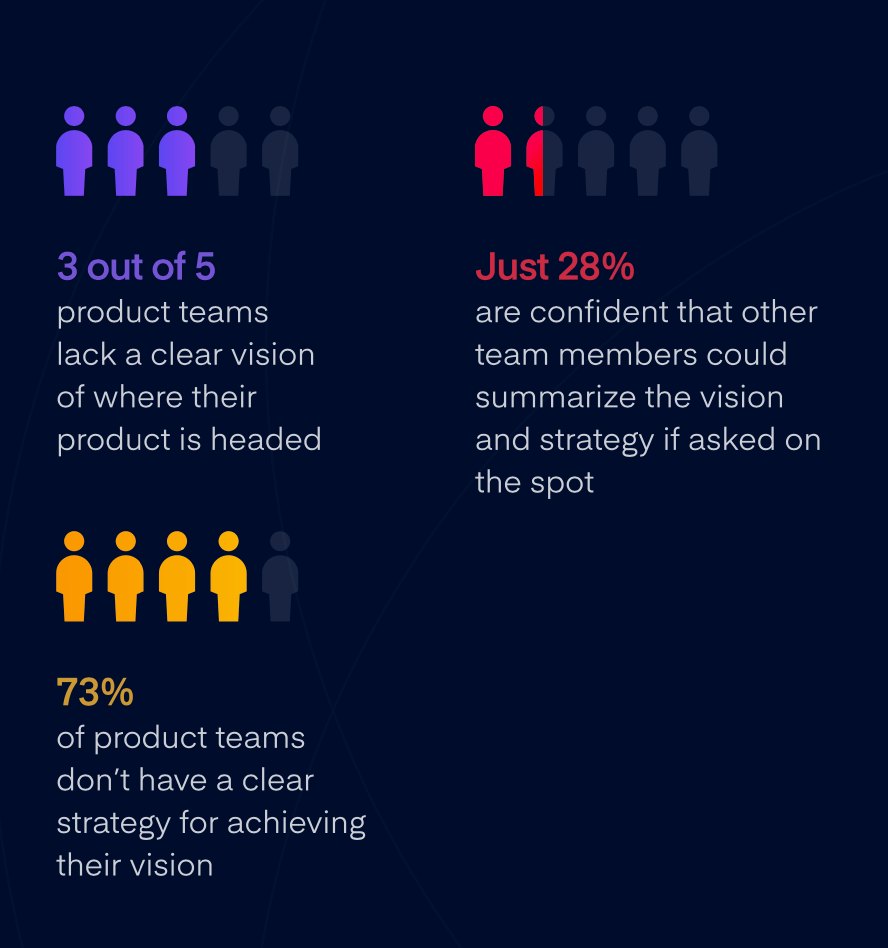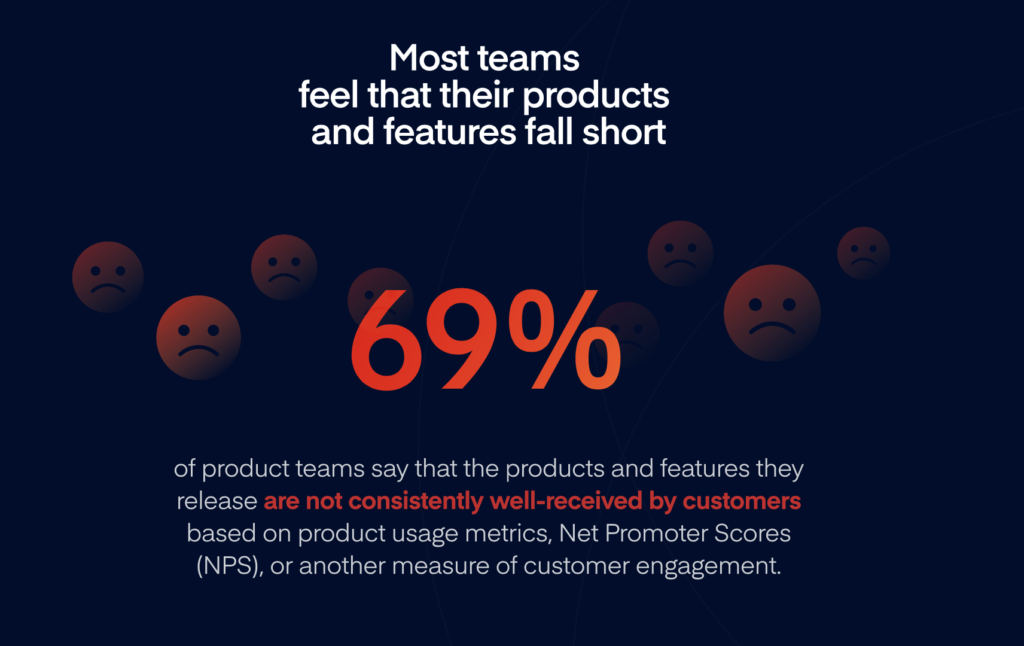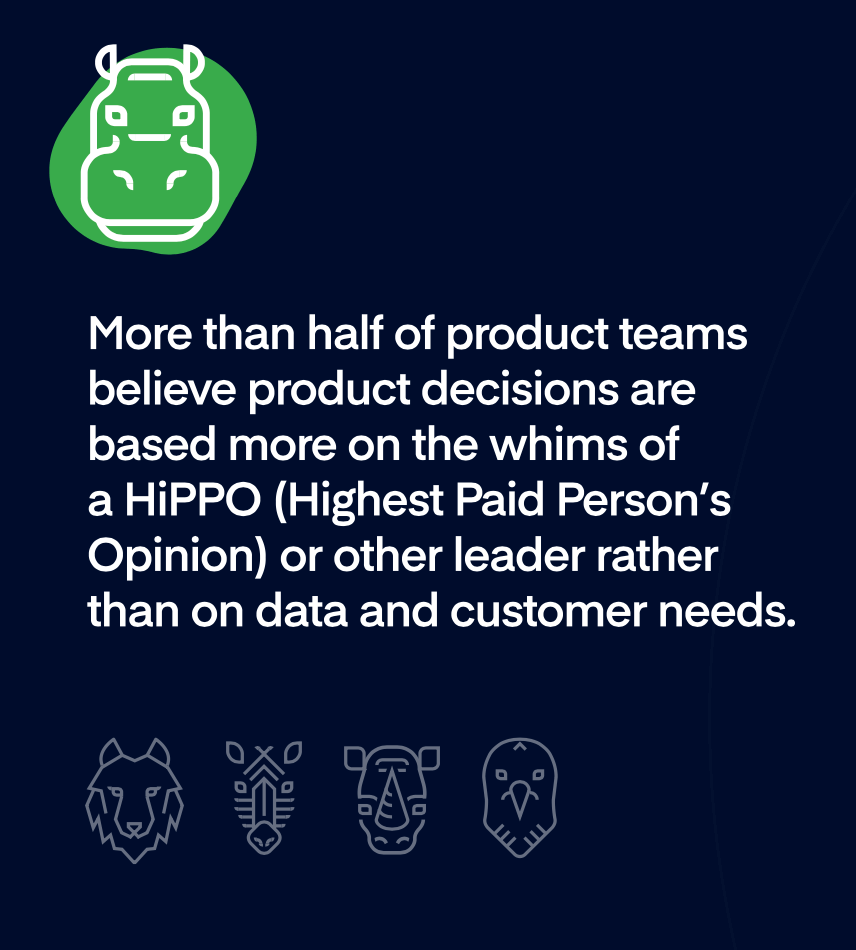Product myths vs. product reality: Why misalignment is still a major problem

If you don’t truly understand customer needs or if you’re lacking a clear vision and strategy, there’s no way to know if you’re building the right thing. This is why product management best practices can be boiled down to three pillars: deep user insights, clear product strategy, and an inspiring roadmap.
This should not be surprising to any product person. Most of these concepts inform our work on a daily basis.
At least, that’s the idea.
But sadly, it’s not always the reality. Companies still waste precious time and resources building products that no one wants or uses.
Why does this happen? It often comes down to misalignment. Whether it’s between product teams and their customers, product leaders and their teams, or company leadership and product teams, there are multiple ways things can—and do—go wrong.
I’d like to explore why misalignment is much more prevalent in the product world than we’d hope.
Misalignment #1: How are product managers supposed to build excellent products when they don’t have a clear vision and strategy?
Conventional wisdom states that product success is linked to a strong vision and strategy. “The product vision is one of the most important and highest-leverage tools for tech-powered product companies,” writes Marty Cagan, founder of Silicon Valley Product Group. A strong strategy defines how you’ll execute your vision, how you’re defining your target market, which problems you’ll solve (and which ones you won’t), and more.
According to our 2021 Product Excellence Report, setting a product vision and strategy is among the top 3 challenges faced by product managers. 3 out of 5 product teams lack a clear vision of where their product is headed, and 73% of product teams don’t have a clear strategy for achieving their vision.

This happens for a number of reasons. Within the product world, there’s no single, overarching definition of what we mean by vision or strategy. There are countless variations, which means we can’t simply assume everyone in our company knows what we mean by these terms.
Misalignment #2: Product managers believe they are being customer-centric, but their actions don’t match their words.
I mentioned earlier that capturing user insights is a fundamental product management best practice. You have to understand your customers and their needs in order to build successful products.
This is not a controversial opinion. Over half of the product managers we surveyed said they have a shared understanding of user needs and 81% say they consider user needs and problems when prioritizing new products and features to build.
Yet at the same time, we uncovered a troubling statistic: 69% of product managers say the products and features they’re building aren’t consistently well-received by customers.

Why are so many teams falling short when it comes to being customer-centric? We’ve uncovered a few troubling trends when it comes to process.
We’re not regularly checking in with customers.
Less than half of product managers evaluate user needs via continuous discovery, user research, betas, prototypes, etc.
We can’t simply talk to customers at the end of a cycle to confirm we’ve got something right. We need to learn from them throughout the product development process.
We’re not capturing feedback from all available sources.
Just 17% of product managers say they successfully capture insights and feedback from all available sources. It’s easy to see why this might happen. Product managers are continuously bombarded by inputs from customer-facing teams themselves. For the product teams lacking a systematic way of logging all of this feedback, a lot of valuable information ends up slipping through the cracks, which leads directly to the next point.
We’re not synthesizing what we learn.
A mere 1 in 5 teams have systems and processes for identifying trends in customer feedback. If we’re not taking the time to filter through feedback to see what patterns are emerging, then how can we expect to apply what we’ve learned? In this case, we risk applying feedback haphazardly, perhaps simply listening to the noisiest customers.
There’s clearly a lot of work to be done, whether it’s collecting feedback more frequently, from a broader range of perspectives, or taking a step back to identify patterns and trends. And these shortcomings tie into the third type of misalignment, which we’ll explore in the next section.
Misalignment #3: Product leaders are far more optimistic than individual contributors (ICs) and mid-management about the state of product processes and overall team morale.
One of the other major types of misalignment occurs between product leaders and their teams. More than half of product teams believe product decisions are based more on the whims of a HiPPO (Highest Paid Person’s Opinion) or other leader rather than on data and customer needs. But product leaders are 20% more likely than their teams to feel empowered to make decisions based on data and customer needs.

The vast majority—80%—of product leaders are confident that their product teams have a shared understanding of user needs. But only 50-60% of ICs and mid-management feel the same.
Why is this misalignment occurring? Because the dangerous animals of product management are running wild. Product leaders are calling the shots on major decisions and need to take a step back and empower their teams to make decisions according to data and customer needs. They also need to bridge the gap by offering more support, coaching, and resources.
Making sense of these trends
By uncovering some of the common types of misalignment, I hope I’ve inspired you to take an honest look at your own company and practices. Do any of these points resonate? Do you see any gaps in your practices or processes where you could take steps to better align?
If you’d like to learn more about our research, you can explore our findings in more detail in the 2021 Product Excellence report.

![The CPO’s Blueprint for Annual Planning: An Opportunity to Drive Change [Part 2]](https://www.productboard.com/wp-content/uploads/2024/11/strategy-blueprint-560x293.png)


